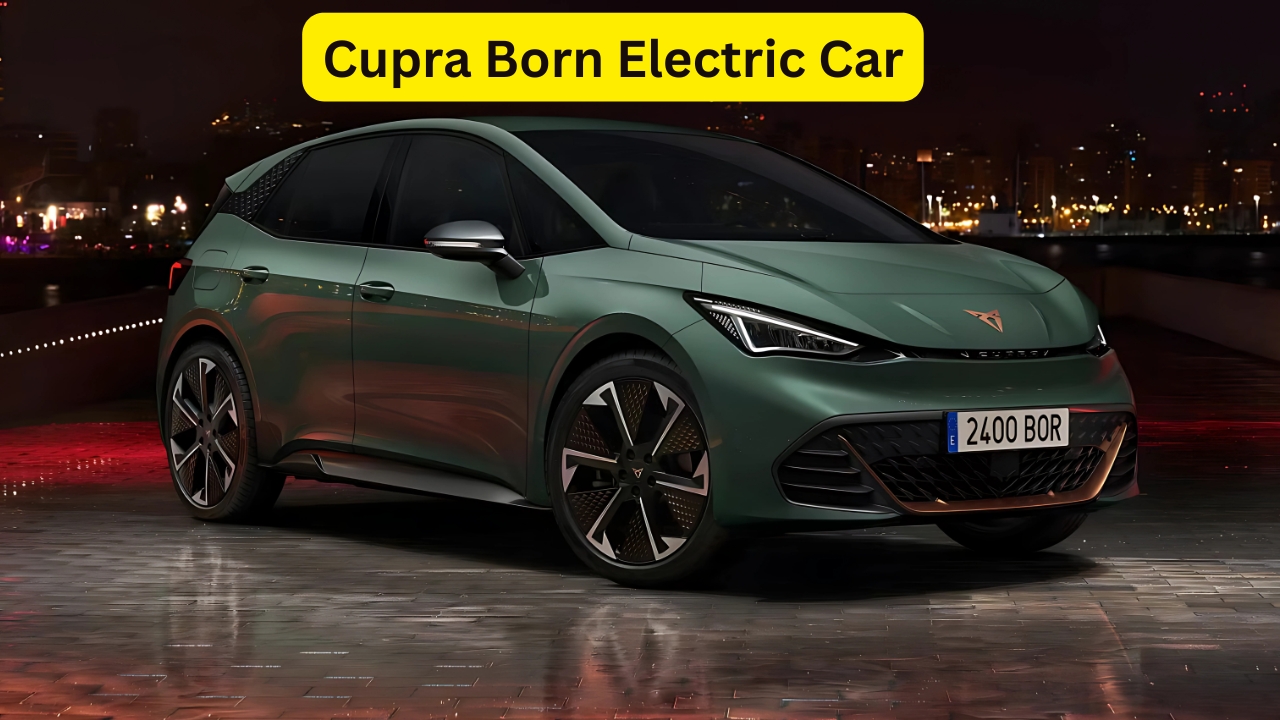The Cupra Born, an electric vehicle (EV) that marked the Spanish brand’s bold entry into Australia’s growing EV market, has hit an unexpected roadblock. Launched with much fanfare in 2023, the Cupra Born was positioned as a stylish, performance-driven compact hatchback aimed at eco-conscious drivers seeking an alternative to mainstream offerings.
However, recent reports indicate that sales of the Cupra Born in Australia have been put on hold due to depleted inventory, raising questions about supply chain challenges, market demand, and the brand’s future strategy in the region. This article explores the reasons behind the pause, its implications for Australian consumers, and what it means for Cupra’s ambitions Down Under.
The Cupra Born: A Promising Start
Cupra, a performance-oriented offshoot of Spanish automaker SEAT and part of the Volkswagen Group, entered the Australian market in 2022 with a clear mission: to offer electrified vehicles that combine sporty aesthetics with sustainable technology.
The Cupra Born, the brand’s first fully electric model, was a cornerstone of this strategy. Built on the Volkswagen Group’s MEB platform—shared with models like the Volkswagen ID.3 and ID.4—the Born was designed to appeal to younger, urban drivers with its sleek design, peppy performance, and competitive pricing.
In Australia, the Cupra Born was introduced at a starting price of around AUD $59,990, positioning it as a premium yet accessible option in the compact EV segment. With a 77 kWh battery offering a claimed range of up to 511 km (WLTP), 170 kW of power, and a 0–100 km/h sprint time of 7 seconds, the Born garnered positive reviews for its handling, build quality, and modern tech features like a 12-inch touchscreen infotainment system and advanced driver assistance systems.
It was marketed as a fun-to-drive EV that didn’t compromise on practicality, making it a compelling choice for Australian buyers looking to transition to electric mobility.
The Born’s launch coincided with Australia’s accelerating EV adoption. In 2023, EVs accounted for approximately 7.2% of new vehicle sales in Australia, up from just 3.1% the previous year.
Government incentives, such as the Electric Car Discount (which removed fringe benefits tax on EVs for business use) and state-level rebates in places like New South Wales and Victoria, further fueled demand. Against this backdrop, the Cupra Born seemed poised to carve out a niche in a market dominated by brands like Tesla, BYD, and MG.
The Inventory Crisis
Despite its promising debut, Cupra Australia recently confirmed that the Born is temporarily unavailable for purchase due to a lack of stock. Dealerships across the country have reported depleted inventories, with no immediate timeline for replenishment. This unexpected pause has left potential buyers frustrated and sparked speculation about the underlying causes.
One major factor appears to be supply chain constraints. The global automotive industry has been grappling with disruptions since the COVID-19 pandemic, including semiconductor shortages, logistical bottlenecks, and raw material scarcity.
EVs, which rely heavily on complex components like lithium-ion batteries, have been particularly affected. Cupra, as a relatively new player in Australia, may lack the supply chain clout of larger competitors, making it harder to secure consistent stock allocations from its parent company, the Volkswagen Group.
Additionally, production challenges in Europe, where the Cupra Born is manufactured, may be contributing to the shortage. Reports from 2023 indicated that Volkswagen temporarily halted production of the ID.3 and Cupra Born at its Zwickau and Dresden plants in Germany due to weaker-than-expected demand in Europe.
While these pauses were initially described as short-term, they may have had a ripple effect on global supply, including Australia. The Volkswagen Group’s decision to prioritize higher-volume markets or more profitable models could also be limiting the Born’s availability Down Under.
Market Dynamics and Demand Questions
The inventory drought raises questions about the Cupra Born’s demand in Australia. While the vehicle received positive media coverage and early interest, some industry analysts suggest that its sales may have underperformed expectations.
Australia’s EV market, while growing, remains highly competitive, with Tesla’s Model 3 and Model Y dominating sales charts. Budget-friendly options like the BYD Atto 3 and MG ZS EV have also captured significant market share, appealing to cost-conscious buyers. The Cupra Born, priced at a premium, may have struggled to compete in a market where price sensitivity and brand recognition play significant roles.
Moreover, Australia’s unique market dynamics pose challenges for new entrants like Cupra. The country’s vast geography and limited charging infrastructure outside major cities can deter EV adoption, particularly for models like the Born, which target urban drivers but may not resonate as strongly in regional areas.
Consumer preferences for SUVs and utes, which dominate Australian roads, could also be limiting the appeal of a compact hatchback like the Born, even with its sporty credentials.
That said, Cupra Australia has not publicly disclosed specific sales figures for the Born, making it difficult to assess whether the inventory issue stems purely from supply constraints or a strategic decision to scale back due to softer demand.
The brand’s limited dealership network—currently around 10 “Cupra Garages” across Australia—may also be a bottleneck, as it restricts the company’s ability to reach a wider audience and manage stock efficiently.
Implications for Australian Consumers
For Australian EV buyers, the pause in Cupra Born sales is a setback. The model filled a gap in the market for a premium, driver-focused compact EV, offering a European alternative to Asian and American brands.
With the Born temporarily unavailable, consumers may turn to competitors like the Hyundai Ioniq 5, Kia EV6, or Volkswagen ID.3 (which is also facing supply challenges in Australia). This could erode Cupra’s early momentum and make it harder for the brand to establish a foothold in the market.
The situation also highlights broader challenges in Australia’s EV ecosystem. While demand for electric vehicles is growing, supply chain issues and limited local manufacturing mean that buyers often face long wait times or, in this case, complete unavailability. This can undermine confidence in EVs as a viable alternative to internal combustion engine vehicles, particularly for buyers who are already hesitant about making the switch.
Cupra’s Next Steps
Cupra Australia has stated that it is working to resolve the inventory issue and hopes to resume Born sales as soon as possible. However, the company has not provided a clear timeline, leaving dealers and customers in limbo.
In the meantime, Cupra is focusing on other models in its lineup, such as the plug-in hybrid Formentor and Leon, which are less affected by the supply constraints impacting fully electric vehicles.
To regain momentum, Cupra may need to address several challenges. First, it must strengthen its supply chain to ensure consistent stock availability, potentially by negotiating better allocations from the Volkswagen Group or diversifying its supplier base.
Second, the brand could invest in expanding its dealership network and marketing efforts to boost awareness and accessibility. Finally, addressing price competitiveness—perhaps through temporary promotions or enhanced financing options—could help the Born stand out in a crowded market.
The Bigger Picture
The Cupra Born’s hiatus reflects broader trends in the global EV industry. As automakers race to electrify their fleets, they face a complex web of production, logistical, and market challenges.
For smaller brands like Cupra, these hurdles are magnified, particularly in markets like Australia, where brand recognition and infrastructure lag behind more established regions like Europe or China.
Despite these challenges, the outlook for EVs in Australia remains positive. Government policies, including the National Electric Vehicle Strategy and state-level incentives, are expected to drive further adoption in the coming years. For Cupra, the Born’s pause is a setback but not a fatal blow.
If the brand can navigate the current supply issues and tailor its strategy to Australia’s unique market, the Born could still play a significant role in the country’s EV transition.
Cupra Born EV
The Cupra Born’s temporary unavailability in Australia due to inventory shortages is a reminder of the growing pains facing the EV industry. While the Born’s stylish design and engaging performance made it a promising contender, supply chain disruptions and potential demand challenges have put its Australian journey on hold.
As Cupra works to restock and rekindle interest, Australian EV buyers are left waiting for the return of this distinctive electric hatchback. The brand’s ability to overcome these obstacles will determine whether the Born can live up to its early promise and help Cupra establish a lasting presence in Australia’s competitive EV market.

